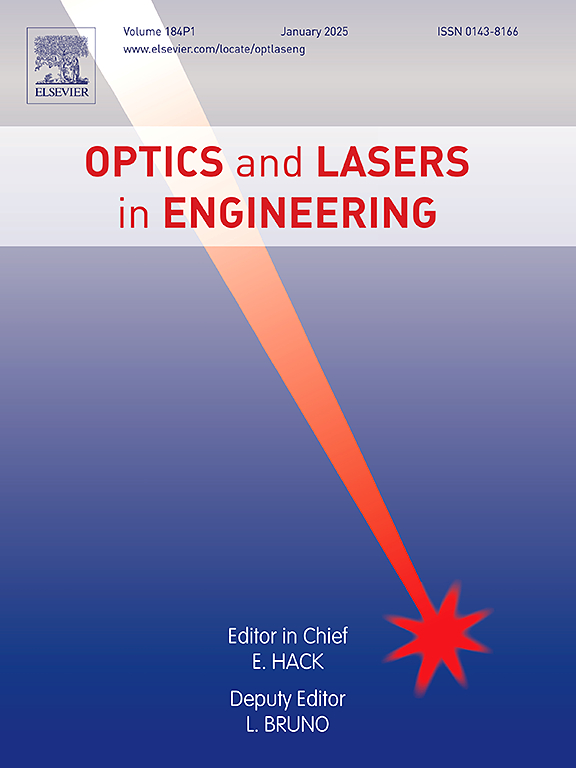Cophasing calibration for a segmented telescope based on two-dimensional dispersed interferograms
IF 3.5
2区 工程技术
Q2 OPTICS
引用次数: 0
Abstract
Astronomical telescopes with increasingly larger apertures are essential for increasing the diffraction limit and improving the efficiency of light collection, thereby enabling the observation of fainter and more distant objects with higher angular resolution. Consequently, ground-based telescopes typically employ smaller segmented mirrors as primary mirrors, particularly those in the 10-meter class or larger. In the case of segmented mirror telescopes, precise alignment between the apertures is indispensable to achieve optimum system resolution. To tackle the challenge of cophasing segmented mirrors, a calibration method is proposed where the sum of the ratio of the second peak to the third peak in a two-dimensional dispersed interferogram serves as the cophasing error function. Simulation analysis and experimental verification were carried out to validate this approach. The simulation results show an accuracy of 1 nm for the cophasing calibration error between two mirrors. The experimental results indicate that this method allows the cophasing error between two plane mirrors with an accuracy of approximately 10 nm and a dynamic range of several hundred microns. Furthermore, the proposed calibration method was successfully employed to achieve a cophasing error of 20 nm for a telescope consisting of four parabolic sub-mirrors with a diameter of 150 mm. The discrepancies in precision between the simulation and the experimental outcomes are examined and elucidated, along with the scope of the measurement range of the method. This method can be employed for the initial calibration of displacement sensors in both ground-based and space-based segmented telescopes, as well as for the direct facilitation of accurate cophasing between submirrors.
求助全文
约1分钟内获得全文
求助全文
来源期刊

Optics and Lasers in Engineering
工程技术-光学
CiteScore
8.90
自引率
8.70%
发文量
384
审稿时长
42 days
期刊介绍:
Optics and Lasers in Engineering aims at providing an international forum for the interchange of information on the development of optical techniques and laser technology in engineering. Emphasis is placed on contributions targeted at the practical use of methods and devices, the development and enhancement of solutions and new theoretical concepts for experimental methods.
Optics and Lasers in Engineering reflects the main areas in which optical methods are being used and developed for an engineering environment. Manuscripts should offer clear evidence of novelty and significance. Papers focusing on parameter optimization or computational issues are not suitable. Similarly, papers focussed on an application rather than the optical method fall outside the journal''s scope. The scope of the journal is defined to include the following:
-Optical Metrology-
Optical Methods for 3D visualization and virtual engineering-
Optical Techniques for Microsystems-
Imaging, Microscopy and Adaptive Optics-
Computational Imaging-
Laser methods in manufacturing-
Integrated optical and photonic sensors-
Optics and Photonics in Life Science-
Hyperspectral and spectroscopic methods-
Infrared and Terahertz techniques
 求助内容:
求助内容: 应助结果提醒方式:
应助结果提醒方式:


